On View
Judy Chicago’s Feminist Revelations Alight in London’s Serpentine
A new landmark U.K. retrospective pairs preparatory drawings with the monumental artworks they would become.
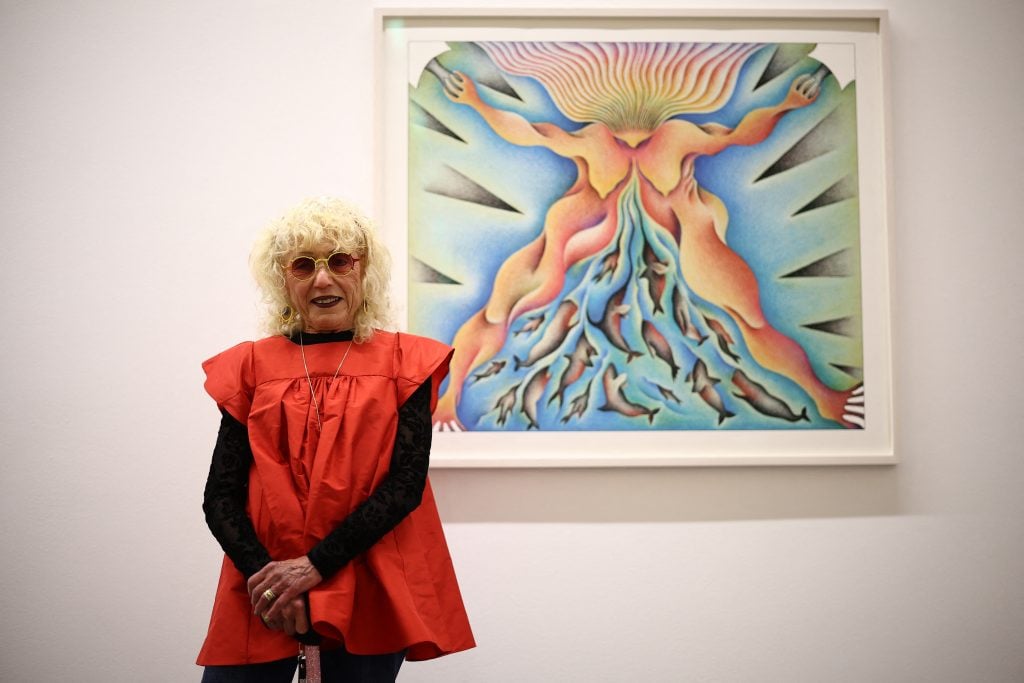
A new landmark U.K. retrospective pairs preparatory drawings with the monumental artworks they would become.

Jo Lawson-Tancred

The scale and ambition of Judy Chicago’s late 20th century feminist art is well known, from her ceremonial banquet The Dinner Party (1974-79) to monumental works associated with Birth Project (1980-85), like In the Beginning, a 30 foot long drawing in Prismacolor pencil, and The Creation, a 14 foot long tapestry. These bold works were some of the very first to center subjects that are an everyday reality for many women, yet had long been rendered invisible by the monotonous creations of a male-dominated art world.
Now, it is time to step behind the scenes and learn about their genesis. “Revelations” at Serpentine North in Kensington Gardens, London, on view through September 1, presents rarely seen drawings and preparatory studies that are shown side-by-side with some of Chicago’s best known works. The creative process is further brought to life through video interviews and audio recordings, including accounts from the original participants from The Dinner Party.
Though she has been the subject of several retrospectives across the U.S., amazingly, this is Chicago’s largest ever solo institutional show in London. Artnet News delves into its greatest revelations.
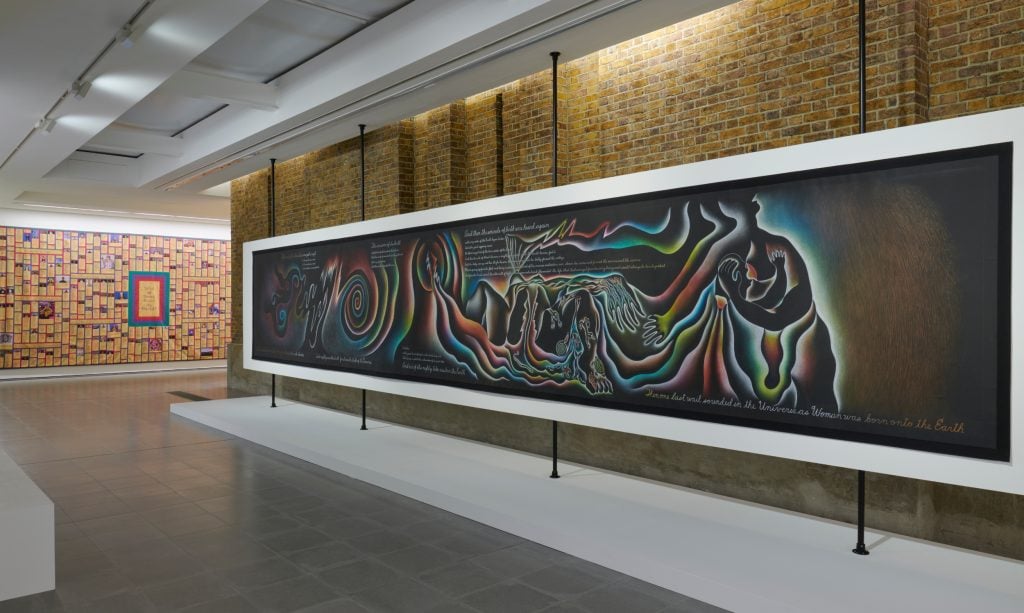
Installation view of “Judy Chicago: Revelations” at Serpentine North in London, 2024. Photo: Jo Underhill, courtesy Judy Chicago and Serpentine, © Judy Chicago/Artists Rights Society (ARS), New York.
In the gigantic drawing In the Beginning (1982), pulsating lines take on both a bodily and topographical character, foregrounding a formal connection between women’s bodies and the natural world. The work emerged from the accumulation of many experimental drawings. When these works are grouped together, we can see how the very act of drawing is one of endless conceptual exploration, perhaps why she once described it as “like breathing for me.”
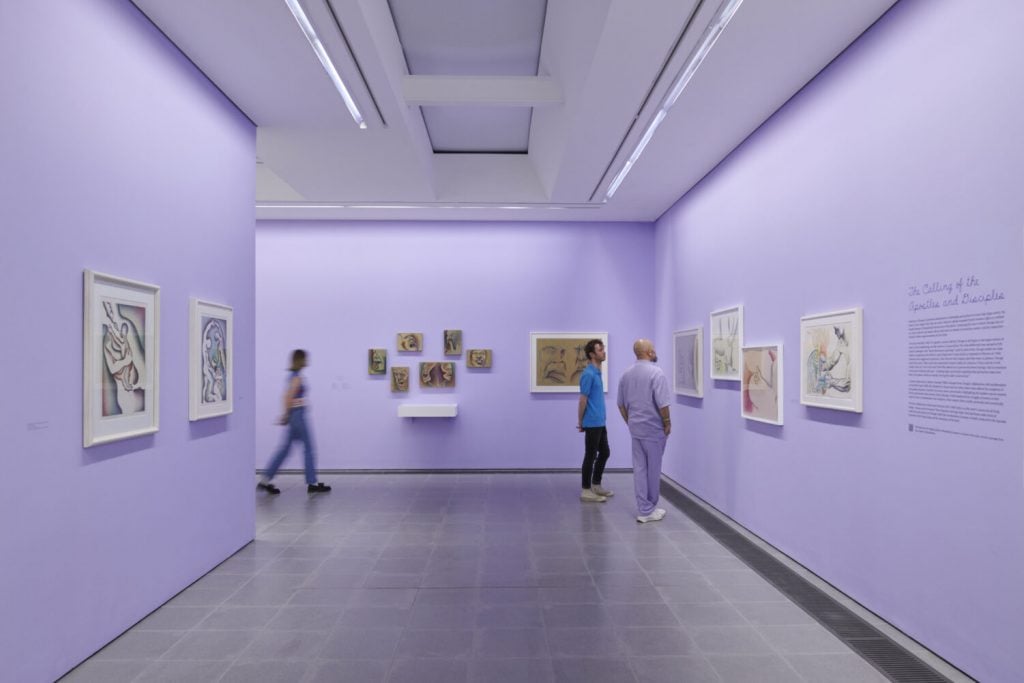
Installation view of “Judy Chicago: Revelations” at Serpentine North in London, 2024. Photo: Jo Underhill, courtesy Judy Chicago and Serpentine, © Judy Chicago /Artists Rights Society (ARS), New York.
The plight of women under patriarchy is alluded to elsewhere in the Shadow Drawings (1980s), a series of intriguing semi-figurative drawings that seem to throb with energy and remain open to interpretation. More recently, Chicago has been vocal in her call for action to address the climate crisis, and drawings from The End: A Meditation on Death and Extinction (2012-18) bring us face-to-face with some of the animals most imminently at threat of dying out, reminding us of the dark reality behind our convenient lifestyles.
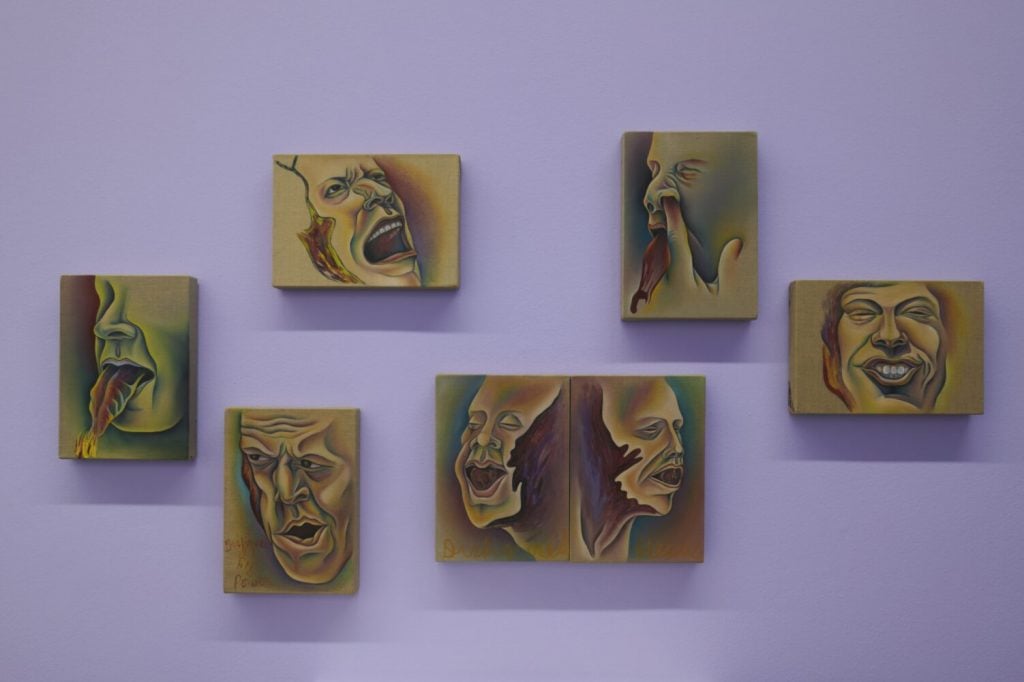
Installation view of “Judy Chicago: Revelations” at Serpentine North in London, 2024. Photo: Jo Underhill, courtesy Judy Chicago and Serpentine, © Judy Chicago /Artists Rights Society (ARS), New York.
Examples from the series PowerPlay (1982-87) subvert tropes of idealized masculinity from Renaissance painting, contorting men’s faces into grotesque caricatures. It is a confronting reminder of the fact that, in some cases, men are a serious threat to women.
“I knew that I didn’t want to keep perpetuating the use of the female body as the repository of so many emotions; it seemed as if everything – love, dread, longing, loathing, desire, and terror – was projected onto the female by both male and female artists,” Chicago has said about the series. “I wondered what feelings the male body might be made to express. Also, I wanted to understand why men acted so violently.”
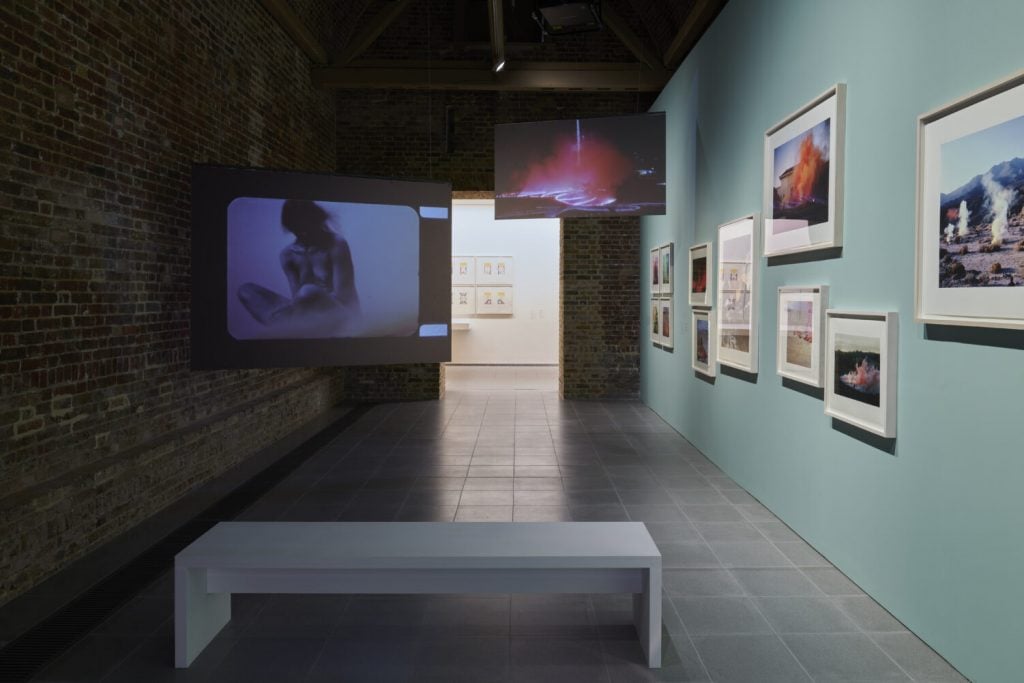
Installation view of “Judy Chicago: Revelations” at Serpentine North in London, 2024. Photo: Jo Underhill, courtesy Judy Chicago and Serpentine, © Judy Chicago /Artists Rights Society (ARS), New York.
One hall in the Serpentine North pavilion has been dedicated to Chicago’s “Atmospheres,” a series of site-specific performances produced from 1968-74 that saw the artist experiment with pyrotechnics. She has since recalled how many male land artists “were trying to control the landscape or the experience in space,” whereas her works aimed “to soften or ‘feminize’ the L.A. art scene of the 1960s, which was singularly inhospitable to women.”
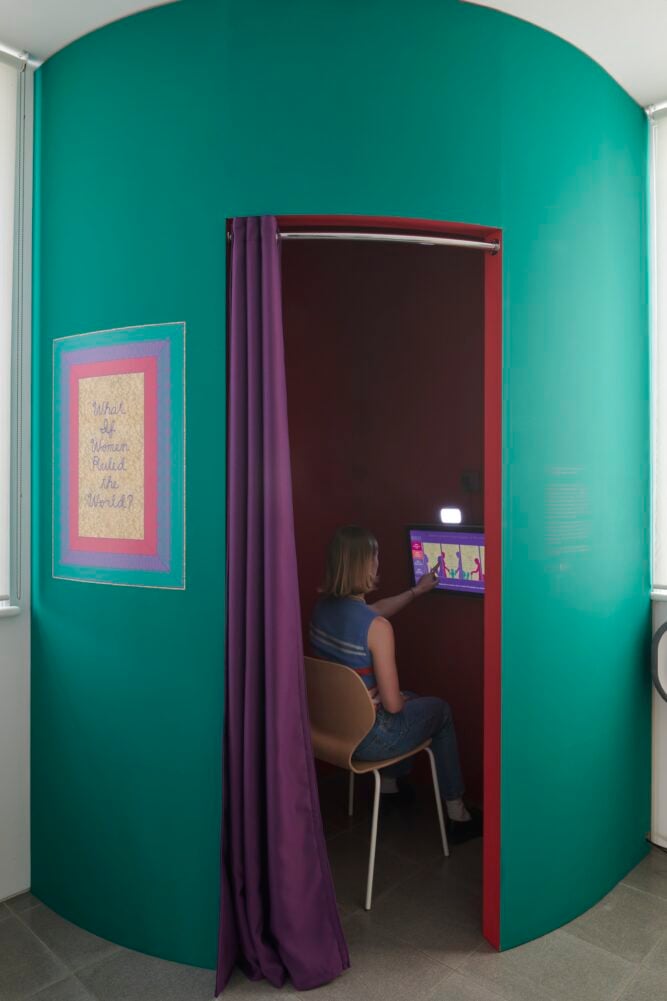
Installation view of “Judy Chicago: Revelations” at Serpentine North in London, 2024. Photo: Jo Underhill, courtesy Judy Chicago and Serpentine, © Judy Chicago /Artists Rights Society (ARS), New York.
Also on view is What if Women Ruled the World?, created in collaboration with Nadya Tolokonnikova of Pussy Riot, art and tech platform DMINTI, and Tezos blockchain. Visitors are invited to enter a participatory booth where they can record video responses to 11 questions, contributing to a global archive of answers that are “digitally” threaded together. Prompts like “would both men and women be gentle?” and “would old women be revered?” invite participants to reflect on the nuances of an alternative reality in which femininity is celebrated and powerful rather than repressed and derided.
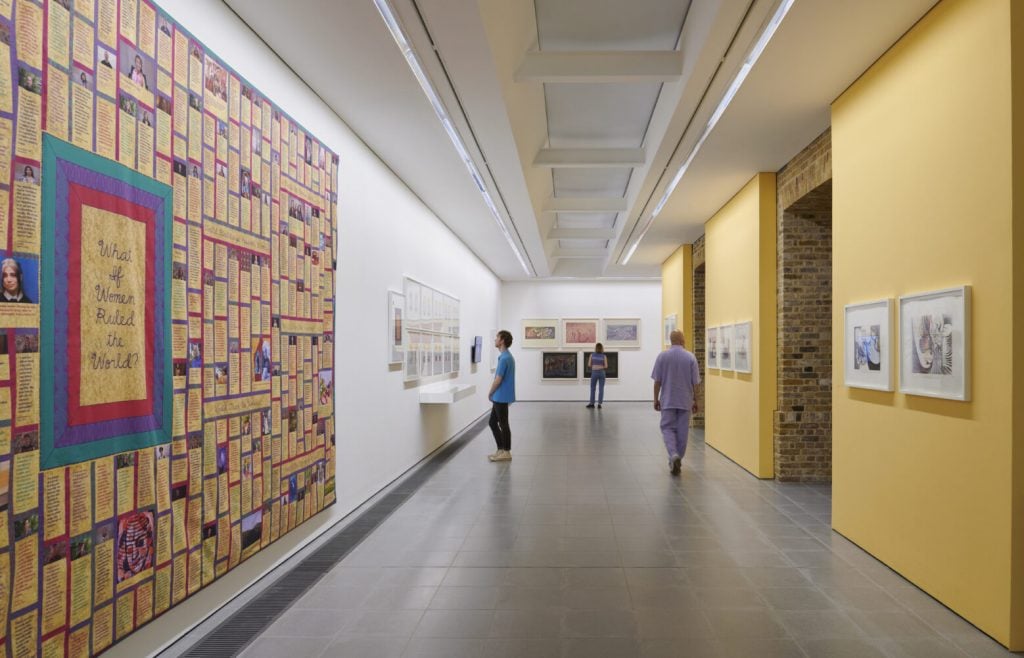
Installation view of “Judy Chicago: Revelations” at Serpentine North in London, 2024. Photo: Jo Underhill, courtesy Judy Chicago and Serpentine, © Judy Chicago /Artists Rights Society (ARS), New York.
What if Women Ruled the World? Participatory Quilt, a large wall textile featuring a patchwork of previous responses from participants in Mexico, Argentina, the U.S., and France, is also on view.
“Judy Chicago: Revelations” is on view at Serpentine North in Kensington Gardens, London through September 1, 2024.